






Antique Copper Mantel Clock with ornate floral detail
Approximately 9" tall, 4.5" wide except at bottom base which is 6", and 2" depth. Made of copper - heavy. Wind-up clock that works. Clock face may be painted on with script-like numbers (not Roman), black on whitish background with both hour and minute hands. Also has a "seconds" face with hand in bottom left corner. Pretty flower detailing on the front. Needs cleaning and in good shape but for a "piercing" type of hole in the copper on the back near the bottom. There are scratches on the bottom but no hallmark that I can see. Also has 4 intentional holes on the bottom, not perfectly symmetrical. Looks like the clock could have been handmade.
My mother purchased it from an antique seller in Kentucky around 1991 as a housewarming gift for me. She was told it was from pre-Civil War times.
Other
Maybe


Hello Kimberly,
Thank you for sending in this most interesting mantel clock to mearto.com for an appraisal.
TITLE:
Altered, bronzed or gilt copper, Art Nouveau era mantel clock case made in the French “Borne” style (see below), housing an Art Deco canister type mantel clock, unsigned on dial and unsigned on case, case originated in France circa 1880-1910, with German or American-made canister type clock dial and movement dating to circa 1920-1940. The clock dial and movement are together with this case by association.
{A French ‘borne’ clock can date back to the time of Louis XVIth, but primarily they were made during the French First Empire era of circa 1800-1830. The name Borne refers to the shape of the case and its resemblance to a French stone boundary or property marker, which had a dome shaped top and straight sides. Understand, this case does not date back that far but was popular and copied during the balance of the 19th century, especially during the Second French Empire era at the end of the 19th century. This case was made during the Art Nouveau era which ranged from 1880 to as late as 1910/1915. Art Nouveau stressed Natural themes, both flora and fauna.}
PROVENANCE:
“My mother purchased it from an antique seller in Kentucky around 1991 as a housewarming gift for me. She was told it was from pre-Civil War times.”
(We obviously do not always get what we think we are paying for. The dealer did not tell your mother the truth, but your mother had a discerning eye in selecting this unusual, but handsomely styled mantel clock.)
DESCRIPTION:
CASE/CONDITION: Generally, 9” in height x 4.5” wide, except at the base where the width expands to 6”. Said to be made of copper and heavy in weight. The case does take the form of a rounded top tablet, old style property marker, and has a rounded arched top with sides that appear to have a very slight taper as one proceeds down the case. Looking at the case from the side, it also has a general taper to each side appearing to thin out very slightly going from the dome-top down to the base. All typically French in its subtle, beautiful design. The domed pediment centers the round brass dial bezel with thick beveled glass, but also has cast or engraved ornamentation in a floral and foliate style. Atop the bezel is a rosette with flowing vines and petals finding their way down both sides of the dial, terminating under the dial as pinwheel curled acanthus leaves, while flanked on either side of the case by hanging petaled rosettes. The bottom of the façade has a triple feathery plumed ornament, typically French, with curled vines with seed pods to either side. (All of the décor is typical of Art Nouveau, stressing the beauty of nature and occurring in Europe, France as well as America, circa 1880-1910s.) Just below is the concave base moulding with French ‘lance-leaf ‘patterns on the façade, both side panels as well as across the back of the case. The back of the case also has copper elements of foliage, most unusual. The case sits on straight French feet with a delicate apron between the feet and a rondel at the center of the bottom of the façade.
There is a hole made on the lower right side of the back of the case. I am not certain whether this happened by accident or by trying to make the base panel look clean. The base panel which you show me originally had four screws to hold the base in place and to support a French mechanical clock which to which it was attached by a long post. The original movement was heavy and had a gong or bell which may have had a post which also attached to the bottom metal panel with screws. Perhaps, in being unable to get those parts out of the case by simply unscrewing the hardware, the person who altered the clock had to attack it from the inside and had to make this jagged hole. Certainly, it does not look like an accidental damage since it is far too extensive. Therefore, originally these four holes had screws which supported and held the original earlier and heavier movement with is various parts, gong and pendulum.
The green patination on the lance leaf section of the base tells me that the case has a good deal of copper since when oxidized by exposure to air, cupric oxide turns green. I also notice areas of the case, around the dial especially, where the oxidation did not turn green but revealed a darker oxidized white metal, so I am not 100% certain the entire case was copper. There may be some spelter, or base metal in the case as well, perhaps beneath a thin layer of copper.
DIAL/CONDITION: This appears to be a round white porcelain dial with enameled black stylized or Gothic (the base of the ones are split as seen in German cuckoo clock dials and they are referred to as being ‘Gothic’ numerals) Arabic hours, a subsidiary continuous seconds dial is located @6, There are solid blued steel Art Deco era Cathedral-variant hands, very handsome and unique. This is certainly an Art Deco era (1920-1940) dial with the original hands. It is unsigned but the use of split ends on the numerals may indicate it could have originated in Germany. The dial remains in very good condition.
MOVEMENT/CONDITION: The movement is not shown except for the dust cover on the back of the movement. This is a balance wheel escapement canister type clock used during the first half of the 20th century as a table clock or as an alarm clock (in a difference small case) . It would not have a pendulum, but instead uses a balance wheel. The ORIGINAL movement that sat inside this COPPER case had two large springs, ran for eight days and struck on the hour and half hour and had a long pendulum rod with bob at the end. The back of the canister is brass and has a central knurled knob for setting the time, above it a skate-key winder for the small spring which ran the movement for about 30 hours and a lever marked “S & F” for slower and faster for making the movement increase or decrease speed. Note the use of English letters. English initials on the speed regulator were used in America, England, Switzerland and German made movements, but the French used ‘A & R’ for Avance and Retard on their homemade movements.
Therefore, a person, perhaps this Kentucky antique dealer, found this lovely older case without a movement or a badly damaged movement and then it was a simple matter to find the ever-present canister type clock movement and dial to fit into the circular opening at the back door and the front dial bezel areas. Hence, a marriage of parts involving two different clocks.
PRICING:
It would be almost impossible to demonstrate such marriages of clock parts that resembled your particular clock. So, I will skip tring to demonstrate comparables for you.
If it were undamaged and actually had its original French movement dating to the 1880 era, we would be looking at a fair market value in the range of 2K-3K today. The case was not made in the 1815 era when ‘borde’ cases were more common since those cases, when metal, were made of fire gilt bronze, not copper.
Still, as a decorator piece, which it is now since the parts are together by association, still presents as a good-looking clock, damaged in the back and scattered areas of oxidation over the façade with a 30-hour time only movement, instead of an eight-day time and striking movement, would retain some value because of the sophistication of the copper case. It is typically French - just by looking at the style and lines. The dial and movement, by itself, has little value and such canister clocks were made in the 1930’s by the tens of thousands.
So, I price it for its aesthetics (which I like), but priced for the Home Furnishing or Decorator market and not the true antique market. And although it was made to deceive the buyer at the time of sale, it retains some value because if you sell it, you are selling it honestly, “as is”.
I hope you fully understand the changes that were made to this clock, sold to your mother, and understand the lowered value is because it is considered a marriage. Marriages in clocks are always bad.
I truly enjoyed doing this appraisal for you and will be happy to answer any questions you may have.
Thank you for choosing mearto.com for the appraisal.
My best,
David
Hi Kimberly,
Thank you for your most kind words. I truly appreciate them, and I always try to uncover the truth about whatever item I inspect.
To answer your question, I would not touch or alter anything more on this clock except to clean the surface of the copper with a soft cloth. So, do nothing to alter the patina. . . . . .
I continued to think about the clock because of the jagged hole, and after I had finished the appraisal
it suddenly dawned on me that in order to hold the posts of the original French movement, those posts were screwed into a solid rectangular block of wood in the bottom of the case. The metal bottom of your case, which indeed was an original piece of the case, had four holes for screws which simply screwed into this rather thick solid block of wood. The metal base screwed to the thick block of wood, as found in almost all 19th century French clocks, simply needed a smooth metal base panel to conform with the rest of the copper case. The problem for those who decided to put a simple canister clock into the opening where the dial sat were left with the problem of how to remove this very thick solid piece of wood, and through this jagged hole they somehow managed to break it into smaller pieces and pull it out the bottom of the back panel. There was just no other way to get it out fully. Therefore, the hole is an honest one and made by those who sought to profit from selling this beautifully shaped case. I would leave it all just as is, and it is all easy to explain on the next sale.
Thank you again for your kind words.
With best regards,
David


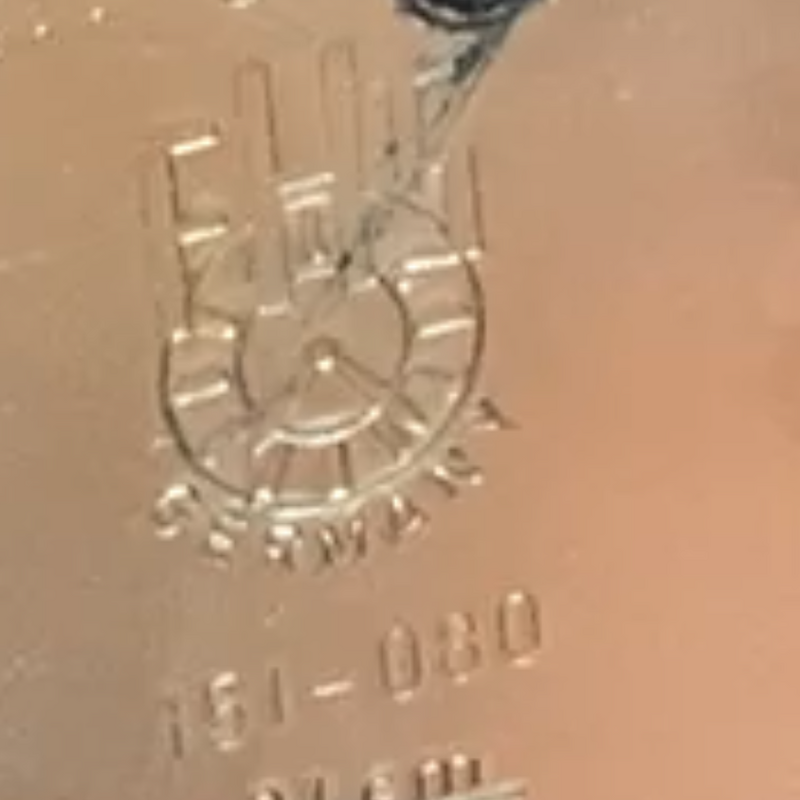
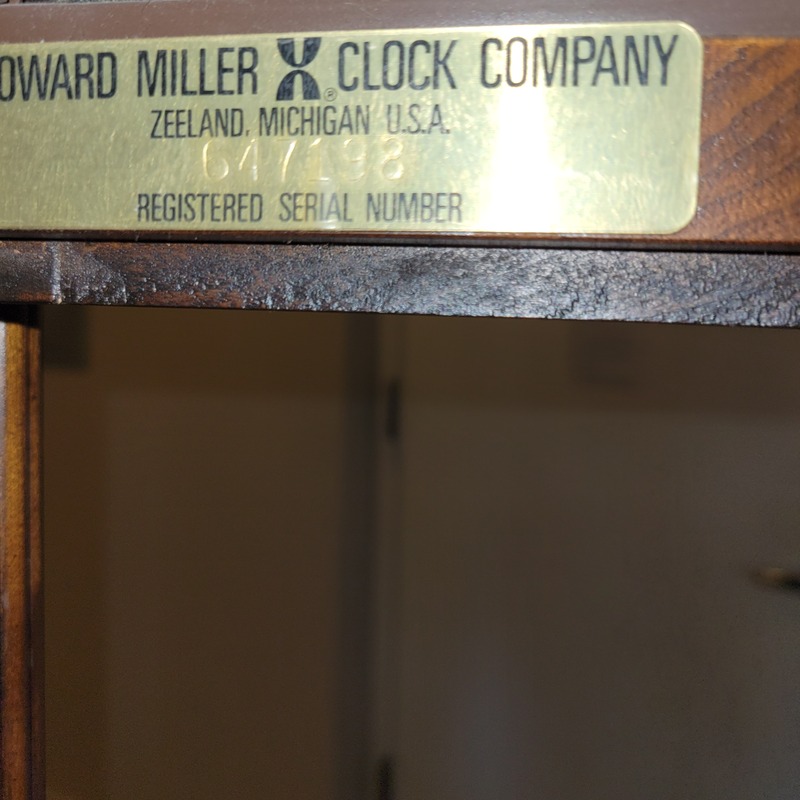

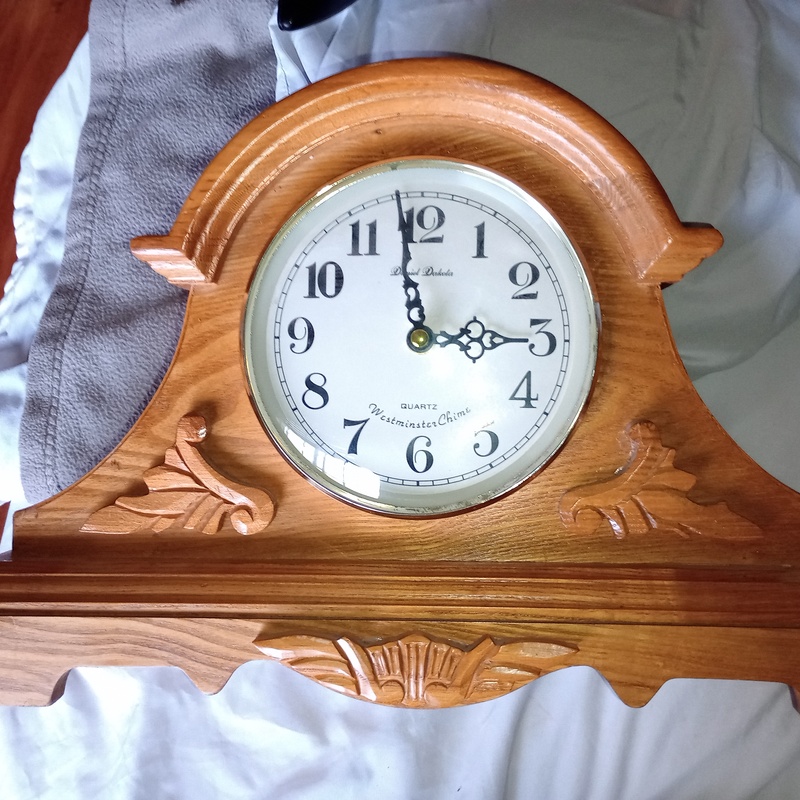
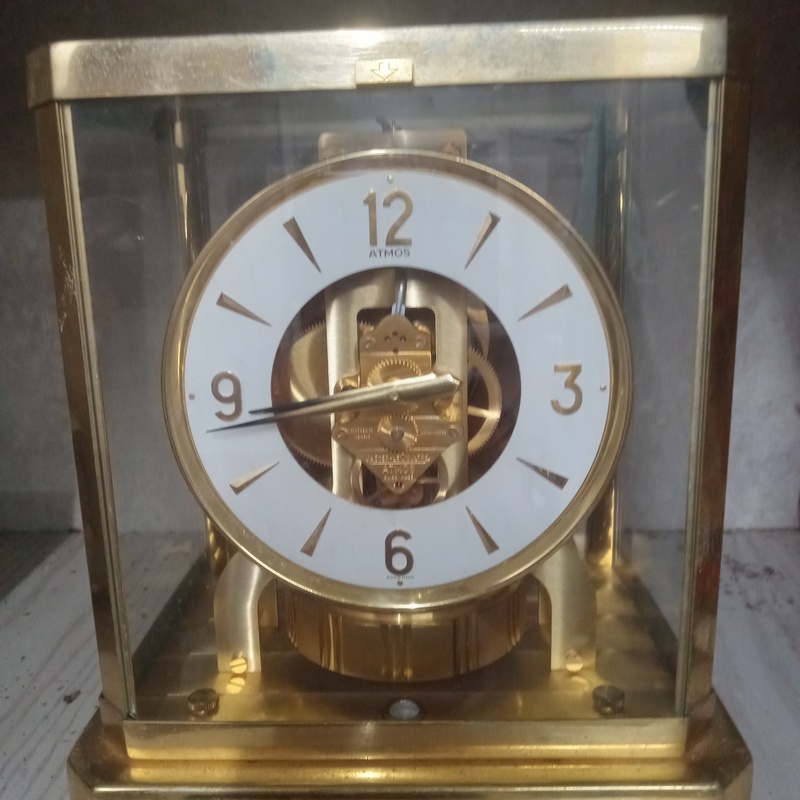


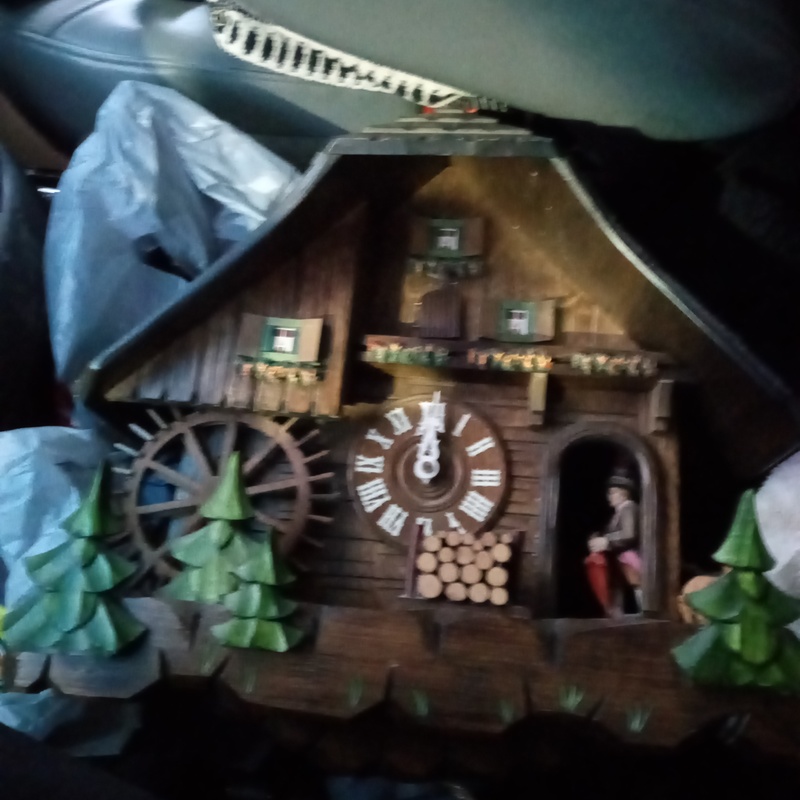
Hi David, Sorry I took so long to comment. I really appreciate your thorough and enjoyable-to-read appraisal of my clock. You really explained everything perfectly and I didn't expect so much detail, but really loved learning so much about it. I have other items that I may submit, and I will also refer others to Mearto. Quick question - if I try to sell the clock, would it be better to clean it up or leave it the way it is for the patina? Thanks so much!